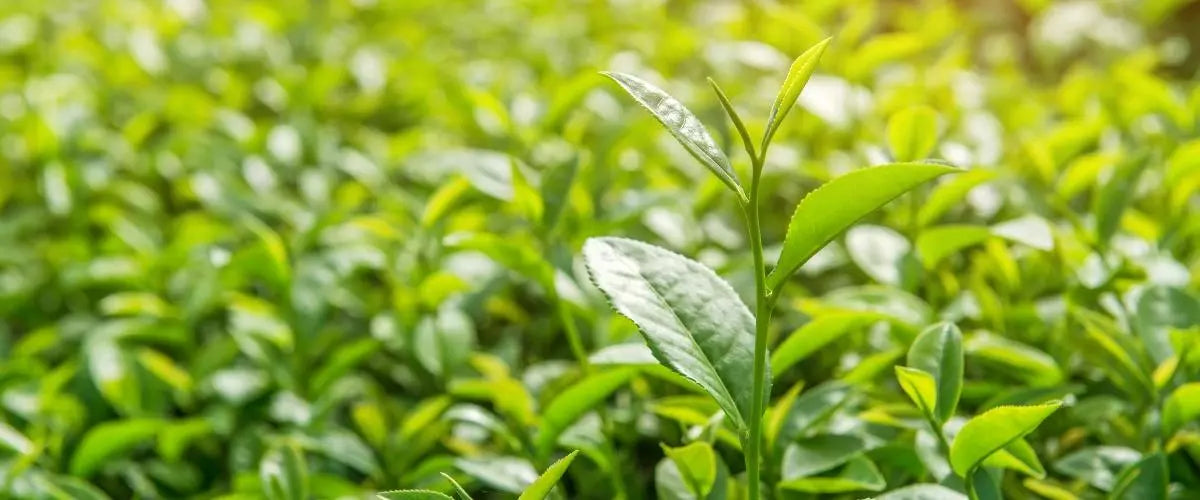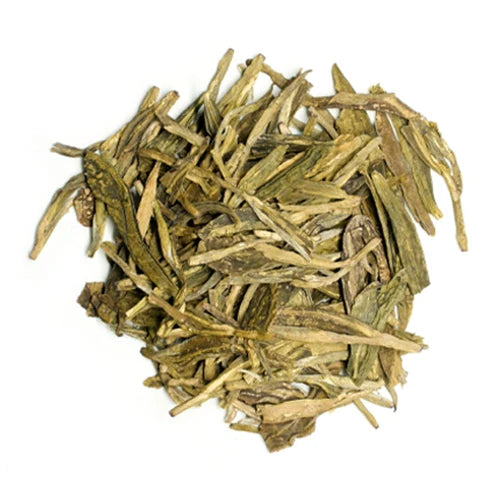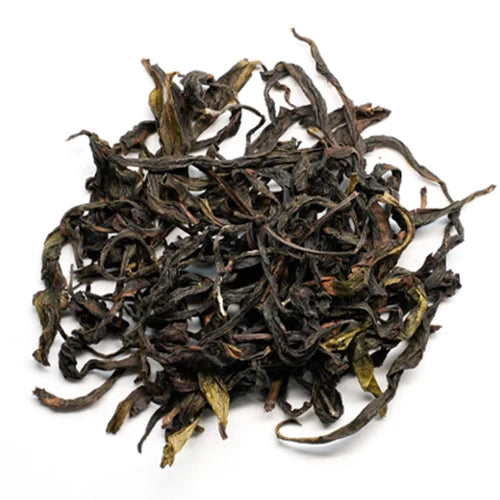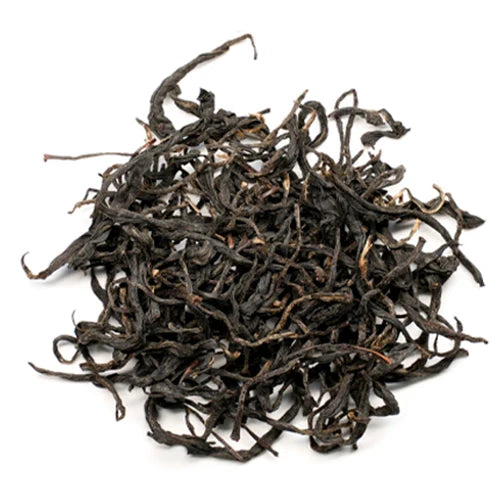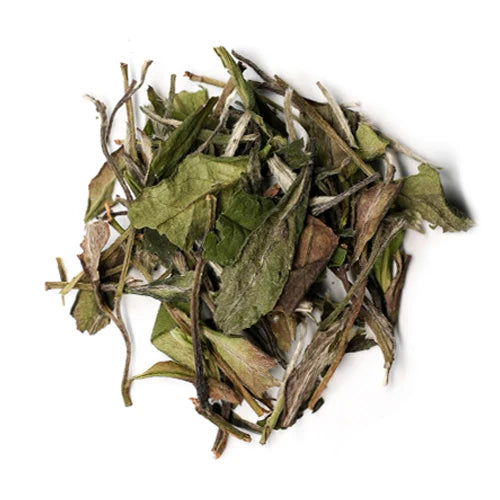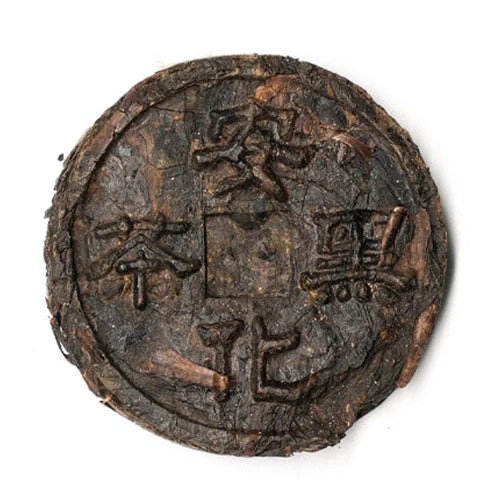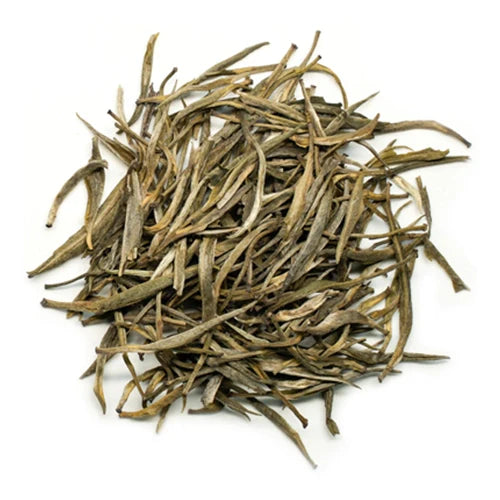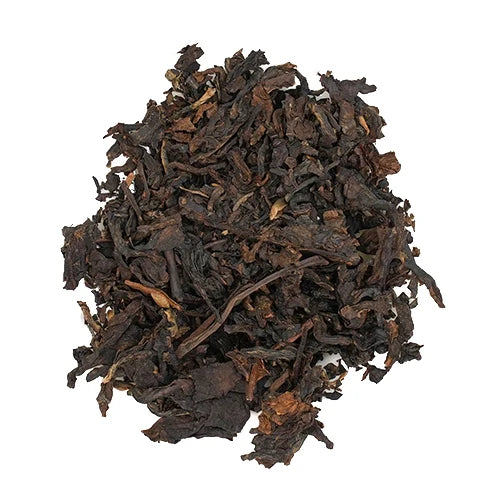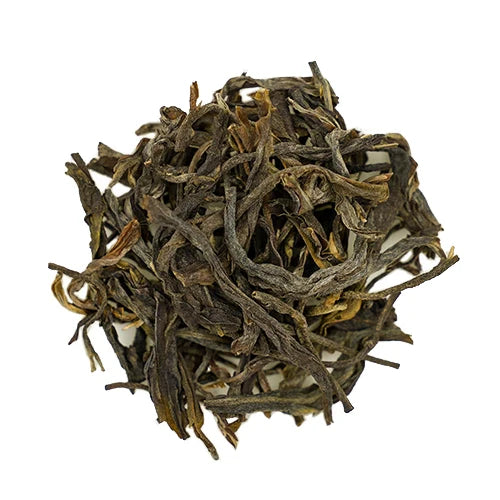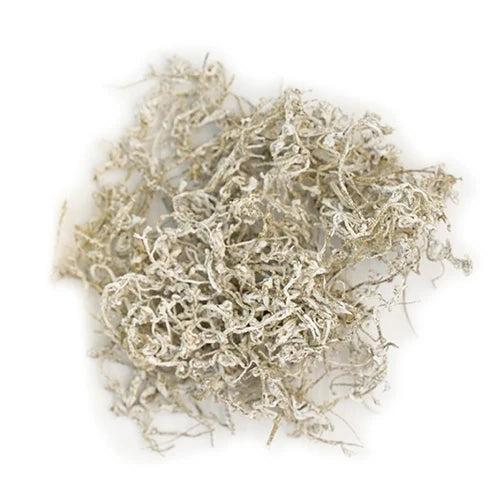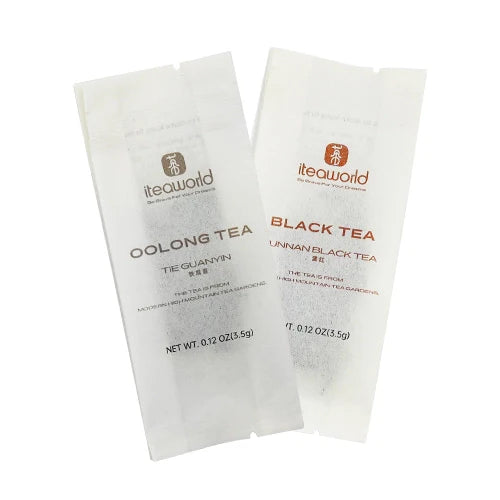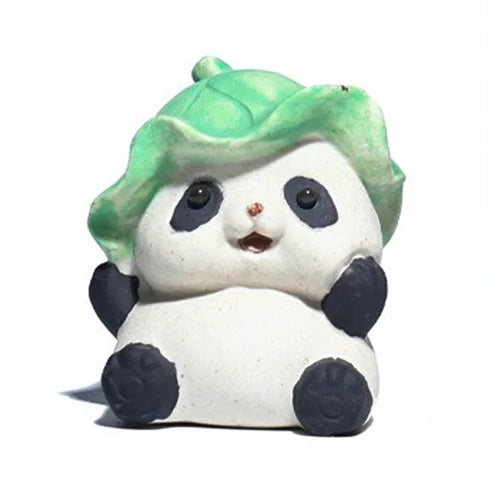Tea, with its centuries-old legacy and captivating array of flavors, has transcended cultural boundaries to become a global beverage of choice. As tea enthusiasts embark on their journey to discover the perfect cup, a pivotal decision awaits them: loose leaf or tea bags? This comprehensive guide unfolds the mysteries of the tea world, shedding light on the advantages of loose leaf tea and offering expert insights to guide your purchases.
What is Loose Leaf Tea?
Loose leaf tea refers to whole tea leaves and buds that have been carefully hand-picked, processed and dried but not crushed into broken bits. It is sold unpackaged, allowing the leaves to remain whole. Loose leaf tea retains more flavor compounds compared to tea bags, which can contain fannings (pieces of leaves) or dust.
History of Tea Bags
Unlike what is commonly believed, tea was drank loose for almost the all of its history. The teabag hasn't been used in the last 100 years or so. According to the most plausible scenario, it was created by accident. In 1908, Thomas Sullivan, an American tea dealer, portioned up tea into single-use packets. However, a customer made the error of dipping the entire bag into hot water. This was the first teabag.Bigger tea firms started to discover how much faster this was for making a cup of tea, and before long, making tea in bags was standard practice. When tea was made in teabags, it also allowed for the mass production of lower-quality leaves for consumers who were more concerned with convenience.
What are Tea Bags Made From?
Filter paper, usually derived from vegetable fibers or wood pulp, is used to make tea bags. Additionally, some tea bags might be composed of silk or nylon based on cornstarch, which are biodegradable or compostable materials. But it's crucial to remember that not all tea bags can be composted or biodegraded because some can contain synthetic materials like nylon or polypropylene.
What are the Main Differences Between Loose Leaf Tea and Tea Bags?
At a fundamental level, loose leaf tea consists of actual tea leaves which are unpacked, whereas tea bags contain ground-up tea particles or fannings packaged within a filter bag. This difference in formulation results in some key variances between the two:
Quality of Ingredients
Tea bags often contain lower quality tea dust, fannings, and even ingredients like flowers, spices, or flavors that stretch the actual tea content. Meanwhile, loose leaf tea exclusively contains whole tea leaves with no additives or fillers. The leaves used in loose leaf are usually from the top of the tea bush which contain higher concentrations of valuable nutrients and antioxidants compared to the smaller, lower leaves used in bagged varieties.
Taste and Aroma
The whole leaves expand fully when brewed, releasing a fuller spectrum of taste compounds and aromatic oils for a more nuanced, complex flavor that brings out the distinctive character of each tea varietal. In comparison, bagged tea may carry a weaker, more uniform taste profile due to the smaller particulate matter steeping abruptly.
Steeping Control
Loose tea leaves allow for adjustments to steeping time, temperature, and the amount of leaves used depending on personal preference. Tea bags deliver a standardized but less customizable strength. With loose leaf, one can fine-tune each parameter to maximize flavor.
Less Waste
Since the leaves are removed from the water after steeping instead of disposing of the entire bag, loose leaf creates significantly less trash. Tea bags contain non-biodegradable plastic and aluminum materials that take centuries to break down in landfills.
Cost Savings
While upfront tea costs may seem higher for loose variants, multiple infusions can be drawn from one batch of leaves compared to the single-use nature of bags. This makes loose tea a better value for money, especially using quality leaves.
Aesthetic Appeal
Witnessing leaves unfurl and steep in a teapot is a visually engaging process, in contrast to a standard tea bag dipping method. This makes loose tea a more meditative and immersive tea drinking experience. Elevate your tea journey with loose leaf black tea! >>>
Why are Loose Leaf Teas Better Than Tea Bags
Loose leaf teas offer several advantages over tea bags, making them a preferred choice among tea enthusiasts. Here are some reasons why loose leaf teas are often considered superior to tea bags:
1.Quality of Leaves:
●Loose Leaf Tea: Loose leaf teas are made up of whole or partially whole leaves, providing a higher quality product. The leaves have more room to unfurl during steeping, allowing the water to interact with the entire surface area. This results in a more flavorful and aromatic cup of tea.●Tea Bags: Tea bags often contain broken tea leaves or dust, which can compromise the overall quality and flavor of the tea. The finer particles may not offer the same depth and complexity found in loose leaf teas.
2.Flavor Profile:
●Loose Leaf Tea: The intact nature of loose leaves allows for a more nuanced flavor profile. Each tea type has its own distinctive taste, and loose leaf teas capture these flavors in their entirety. Tea enthusiasts can experience the full range of notes, from the top to the base, with every sip.●Tea Bags: Tea bags may contain lower-grade tea leaves or fannings, which are broken fragments. This can result in a less complex and less flavorful brew compared to loose leaf teas.
3.Aroma:
●Loose Leaf Tea: Essential oils and volatile compounds present in whole leaves contribute to a richer aroma. The act of steeping loose leaves releases these aromatic compounds, providing a fragrant and delightful experience.●Tea Bags: Due to the confinement of tea bags, the release of aromas may be restricted. The fragrance in tea bags might be less pronounced and vibrant compared to the open, expansive nature of loose leaf tea.
4.Ceremonial and Ritualistic Experience:
●Loose Leaf Tea: Brewing loose leaf tea can become a ritualistic experience, especially with traditional brewing methods such as gongfu cha. This adds a ceremonial aspect to tea preparation, enhancing the overall enjoyment.●Tea Bags: While convenient, tea bags may lack the ritualistic aspect and sensory engagement that comes with preparing and savoring loose leaf tea.
Pros and Cons of Loose Leaf Tea
Pros of Loose Leaf Tea
1.Loose leaf tea offers numerous advantages that make it a preferred choice for tea enthusiasts. Firstly, loose leaf tea is known for its superior quality. Unlike tea bags that often contain broken or lower-grade tea leaves, loose leaf tea consists of whole, unbroken leaves. This allows for a more robust flavor, enhanced aroma, and a richer overall tea-drinking experience.2.Secondly, loose leaf tea provides greater control and customization. With loose leaf tea, you have the freedom to adjust factors such as water temperature, steeping time, and tea-to-water ratio according to your personal taste preferences. This flexibility allows you to experiment and create a cup of tea that is perfectly tailored to your liking. Additionally, loose leaf tea can be steeped multiple times, offering multiple infusions and a more economical tea-drinking experience.
Cons of Loose Leaf Tea
1.One drawback of loose leaf tea is that preparing it requires more time and equipment compared to simply dunking a tea bag. You need a kettle to boil water, a teapot or infuser to hold the loose leaves, and must measure the appropriate amount of leaves for each brew. The preparation process takes several minutes as you heat the water, steep the leaves, and wash any utensils after.2.Also, loose tea leaves pose a small risk of escaping an infuser and winding up in your brewed tea, potentially affecting the taste. This doesn't happen with tea bags where the leaves are securely sealed inside. Storing loose tea requires airtight containers to prevent dried leaves from becoming stale more quickly than bagged alternatives. Special care must also be taken in cleaning essential loose leaf tools like teapots and infusers.Embrace the exquisite flavors of loose leaf Oolong tea! >>>
Pros and Cons of Tea Bags
Pros of Using Tea Bags
1.Tea bags offer several advantages that make them a convenient and popular choice for tea drinkers. Firstly, tea bags provide convenience and ease of use. They eliminate the need for measuring loose tea leaves, making them a quick and convenient option for a single cup of tea. Tea bags are also portable, making them ideal for on-the-go tea enthusiasts who can easily carry them in their bags or pockets.2.Secondly, tea bags are generally more accessible and widely available than loose leaf tea. They can be found in most grocery stores, making it convenient for individuals to purchase their preferred tea varieties without the need for specialized tea shops or online orders. Additionally, tea bags often come in a variety of flavors and blends, catering to a wide range of taste preferences. This accessibility and variety make tea bags a convenient and versatile option for tea drinkers.
Cons of Using Tea Bags
1.While tea bags offer convenience, they also come with a few drawbacks. Firstly, tea bags often contain lower-quality tea compared to loose leaf tea. They are typically filled with tea dust or fannings, which are the broken and smaller tea leaves. This can result in a less flavorful and aromatic cup of tea compared to the whole leaves used in loose leaf tea.2.Secondly, tea bags can limit the control over the brewing process. The confined space within a tea bag restricts the expansion and circulation of tea leaves, which can affect the extraction of flavors and aromas. This can result in a weaker or less nuanced cup of tea. Additionally, the materials used in some tea bags, such as bleached paper or nylon, may impart unwanted flavors or chemicals to the tea.
Types of Loose Leaf Tea
1. Green Tea:Green tea is known for its fresh and grassy notes, resulting from the minimal oxidation it undergoes during processing. Varieties such as Dragon Well from China and Sencha from Japan offer a broad spectrum of flavors, ranging from vegetal to umami to lightly nutty. Dragon Well tends towards toastier notes with a deep flavor, while sencha boasts a bright, sweet aroma.2. Black Tea:Black tea is a popular beverage known for its robust flavor and energizing properties. One notable variety is Yingde black tea, originating from the Yingde region in Guangdong, China. Renowned for its superior quality and distinct taste, Yingde black tea is characterized by its rich, malty flavors and a hint of sweetness. Its captivating aroma and deep amber liquor make it a favorite choice for tea enthusiasts seeking a bold and satisfying cup of black tea.3. Oolong Tea:As a semi-oxidized tea, oolong occupies the broad middle ground between green and black tea. The level of oxidation can vary greatly, from barely oxidized to almost black. Two famous oolong varieties are Tie Guan Yin with its orchid aromas and slight astringency, and Chinese Fujian Da Hong Pao known for its sweet, floral perfume. Oolongs skillfully showcase the complex interplay between flavor and oxidation.4. White Tea:White tea is the least processed of all true teas. The young bud and leaf varieties, like Silver Needle and Bai Mu Dan, feature subtle sweetness and delicate floral and vegetal flavors. Prized for their nuanced complexities, white teas are softly infused to bring out their refined attributes.5. Pu-erh Tea:Aged and fermented, pu-erh teas show great maturation potentials. Sheng or 'raw' pu-erh naturally post-ferments over time, developing profound earthy and mushroomy notes. Shu or 'cooked' pu-erh undergoes a fast fermentation yielding dark liquors with woodsy aromas. Both reward contemplative steeping and aging.
Understanding Tea Grades
1.Whole Leaf vs. Broken Leaf:
Whole leaf teas often indicate a higher grade, as the leaves are intact and retain their essential oils. Broken leaf teas, while still offering a delightful experience, may have a different flavor profile due to increased oxidation during processing. The smaller pieces of broken leaf teas can impart a bolder, more robust flavor compared to whole leaves which have a lighter infusion.
2.Grading Systems:
Various tea-producing regions employ grading systems that classify teas based on factors such as leaf size, appearance, aroma and the part of the plant the leaf was picked from. China and Japan use numeric scales to rate degrees of wholeness and quality, with one being the finest. Other places use letters - FBOP grade in India grades size and quality. Familiarize yourself with these systems to make informed choices.
3.Single-Origin vs. Blends:
Single-origin teas allow you to deeply experience the terroir of where it was grown. Explore single-estates or regions to discover their unique characteristics. Blends combine leaves from different regions to create layers of flavor, but don't impart the same sense of place. Blends allow for interesting flavor combinations, while single-origin teas offer purity and complexity to unpack.
4.Reviews and Reputations:
Reading reviews and researching a tea maker's reputation provides further insight into grade. Masters with high standards produce superior grades. Ingredient sourcing and specific processing methods also impact quality. Over time, you'll learn to identify subtle cues indicating grade from appearance to infusion. Understanding grades guides you towards teas that align with your preferences.
Buying the Best Loose Leaf Tea – A Guide
Loose leaf tea is a popular choice among tea lovers, known for its superior quality and taste compared to tea bags. However, with so many varieties and options available, buying the best loose leaf tea can be overwhelming, especially for beginners. If you are new to loose leaf tea or simply looking to try out different types of tea, a tea sampler can be a great option.
1.Determine Your Preferred Taste
First and foremost, you need to determine your preferred taste in tea. Loose leaf tea comes in various varieties such as green tea, black tea, white tea, oolong tea, and more, each with its unique flavor and characteristics. If you like a light and delicate taste, you can go for green or white tea; if you prefer a bolder flavor, black or oolong tea would be a good choice. Additionally, you can also consider the caffeine level in the tea, as some teas have higher caffeine content than others.
2.Consider the quality of the tea
When buying loose leaf tea, it is essential to pay attention to the quality of the tea. Loose leaf tea is generally considered to be of higher quality than tea bags, as the leaves are not broken down and retain more of their natural oils and flavors. Look for teas that are hand-picked and sourced from reputable tea gardens. You can also look for certifications such as Fair Trade or Organic to ensure that the tea is ethically and sustainably produced.
3.Check the freshness of the tea
The freshness of the tea is crucial in maintaining its quality and taste. When buying loose leaf tea, make sure to check the packaging date or expiration date to ensure that the tea is fresh. It is recommended to consume loose leaf tea within a year of its packaging date for the best taste.
4.Know the origin of the tea
The origin of the tea can play a significant role in its taste and quality. Different regions have different growing conditions and processing methods, resulting in unique flavors and characteristics. For example, Chinese green tea is known for its delicate and grassy taste, while Indian black tea is bold and robust. Knowing the origin of the tea can help you choose a tea that suits your taste preferences.
5.Consider the cost and quantity
Loose leaf tea can vary in price, depending on the quality, origin, and type of tea. It is essential to consider your budget and how much tea you want to purchase. Loose leaf tea is usually sold in ounces, so make sure to check the quantity before buying. Some famous sellers like iTeaworld also offer tea samplers, which can be a good option if you want to try different types of tea without committing to a large quantity.In conclusion, buying loose leaf tea requires some knowledge and consideration. By following these guidelines, you can choose a high-quality tea that suits your taste and budget. Remember to store your loose leaf tea properly in an airtight container away from heat and moisture to maintain its freshness and taste. Enjoy your cup of loose leaf tea!
Brewing Essentials
Brewing loose leaf tea is an ancient art that demands attention to detail and an appreciation for the subtleties of flavor. Unlike tea bags, which often contain broken leaves or dust, loose leaf tea offers a richer and more complex taste profile. Elevate your tea-drinking experience with these essential brewing tips that cater to the unique qualities of loose leaf tea.
1. Begin with Quality Loose Leaf Tea:
●The journey to a perfect cup of tea starts with the leaves themselves. Choose high-quality loose leaf tea sourced from reputable suppliers. Whole or partially whole leaves ensure a more nuanced and flavorful brew.
2. Accurate Measuring for Consistency:
●Precise measurements are crucial for consistency in your tea preparation. Use a teaspoon to measure the right quantity of loose leaves, generally around one teaspoon per 8 ounces of water. Adjust based on the type of tea and your taste preferences.
3. Mastering Water Temperature:
●Different types of tea require specific water temperatures to extract their optimal flavors. Invest in a variable temperature kettle to achieve precision:●White and green teas: 160–185°F (71–85°C)●Oolong teas: 185–205°F (85–96°C)●Black and herbal teas: 200–212°F (93–100°C)
4. Choose the Right Teaware:
●The choice of teaware significantly influences the brewing process. Use a teapot or infuser that allows the leaves to unfurl and interact freely with the water. For certain teas, consider a gaiwan or Yixing clay teapot for more controlled brewing.
5. Perfecting Steeping Time:
●Adjusting steeping times is an art that can make or break your tea. Experiment with different durations to find the sweet spot for your chosen tea. Shorter times result in a lighter brew, while longer times intensify the flavor.
6. Filtered Water for Purity:
●Water quality directly impacts the taste of your tea. Use filtered water to avoid impurities that can interfere with the tea's flavor. Balanced mineral content in the water enhances the overall brewing experience.
7. Rinsing the Leaves:
●Some teas benefit from a quick rinse before the first infusion. Pour hot water over the leaves and then discard it. This helps awaken the leaves and removes any residual dust or impurities.
8. Serving with Ritual:
●Pour your brewed tea into a teapot or directly into teacups, embracing the ritual of tea serving. This step adds a sensory element to the experience, allowing you to appreciate the tea's color and aroma.Brewing loose leaf tea is an art form that invites exploration and discovery. With these essential tips, you're well on your way to mastering the intricacies of brewing loose leaf tea and unlocking a world of flavors in every cup. So, gather your favorite loose leaves, set the stage with the right teaware, and embark on a journey of sensory delight with each exquisite brew.Elevate gifting with our thoughtfully curated tea gift sets! >>>
How to Store Tea
Proper storage is essential for preserving the flavor, aroma, and quality of your tea. Whether you're a casual tea drinker or a devoted enthusiast, following these guidelines will ensure that your tea leaves maintain their freshness over time.1. Airtight Containers: Store tea in airtight containers to shield it from air, moisture, and external odors. This preserves the tea's integrity and prevents it from absorbing unwanted smells.2. Cool, Dark, and Dry: Choose a cool, dark, and dry storage location. Exposure to heat and sunlight can degrade tea leaves, affecting their taste and aroma. Keep tea away from direct sunlight or heat sources.3. Opaque Containers: Opt for opaque containers to protect tea from light, as prolonged exposure can lead to flavor deterioration. Avoid transparent containers that allow light to compromise the tea's quality.4. Sealable Bags: If tea comes in sealable bags, reseal them after each use. Removing excess air before sealing minimizes exposure and helps retain freshness.5. Separate Strong-Smelling Teas: Store strong-smelling teas separately to prevent flavor transfer. Keep flavored or scented teas in different containers to maintain distinct characteristics.6. Avoid Refrigeration: Refrain from refrigerating tea, as fluctuating temperatures and potential moisture can lead to condensation, negatively impacting the leaves.By adhering to these storage practices, you can extend the shelf life of your tea and indulge in each cup with the rich and nuanced flavors that characterize high-quality teas.
Frequently Asked Questions About Loose Leaf Tea And Tea Bags:
1.Are there more flavor options available with loose leaf tea?Yes, loose leaf tea offers a wide variety of flavor options. With loose leaf tea, you can explore different tea types, blends, and even create your own custom blends. Tea bags usually have a more limited selection of flavors.2.Do loose leaf teas have more health benefits than tea bags?Loose leaf teas tend to have higher levels of antioxidants and polyphenols compared to tea bags. These beneficial compounds are often more concentrated in loose leaf tea due to the use of whole leaves.3.Can I use loose leaf tea in tea bags?Yes, you can use empty tea bags or disposable tea filters to brew loose leaf tea. This allows you to enjoy the convenience of tea bags while still using your preferred loose leaf tea.4.Are loose leaf teas more expensive than tea bags?Loose leaf teas can vary in price depending on factors such as quality, origin, and rarity. While some loose leaf teas may be more expensive than tea bags, there are also affordable options available. The cost is often justified by the superior quality and flavor experience that loose leaf tea offers.5.Are there any specific brewing techniques for loose leaf tea?Brewing loose leaf tea typically involves using a tea infuser, teapot, or other brewing tools. The steeping time, water temperature, and tea-to-water ratio may vary depending on the type of tea and personal preference.6.Are there any health benefits associated with tea bags?Tea bags, like loose leaf tea, can provide health benefits due to the antioxidants and polyphenols present in tea. However, the specific health benefits may vary depending on the type and quality of tea used.Remember, loose leaf tea provides a more customizable and high-quality tea-drinking experience compared to tea bags.Taste the essence of nature with our enticing green tea sampler! >>>
The Final Word About Loose Leaf vs Tea bag
Tea bags can be a convenient way to introduce people to the world of tea on particular occasions. On the other hand, you will uncover a world of enthusiasm and exploration when you take on the task of making loose leaf tea. A multitude of unique teas lie in wait, beckoning you to discover their alluring scents and tastes. You can immerse yourself in the art of tea preparation by experimenting with ratios and brewing processes with loose leaf tea, turning yourself into an alchemist. Finding the ideal mix that appeals to your particular palate makes every sip an adventure. Accept the charm of loose leaf tea and allow it to kindle a desire in you that goes beyond the norm, taking your tea-drinking to new and amazing levels.

























